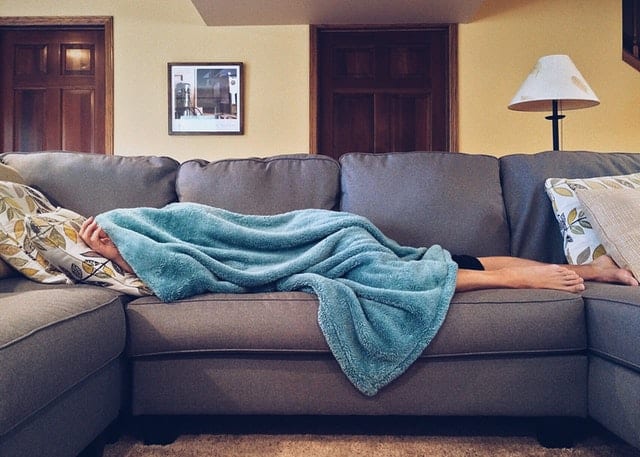What are Molds?
You can find mold in many places, including buildings and residences. Mold can be seen both indoors and outside. Open entrances, windows, vents, and air conditioning systems may all allow mold to infiltrate your house.
Mold in the air may stick to clothes, shoes, and pets, then be brought inside. Mold spores will develop in areas with excess moisture, such as when leaking has happened in pipes, walls, roofs, plant pots, or where flooding has occurred.
Mold thrives in many construction materials because they supply the proper nutrients. Wet cellulose materials, such as paper and paper goods, cardboard, wood products, and ceiling tiles are especially favorable to mold formation.
Mold is usually seen as a colony. This means that multiple varieties of mold may coexist in the same space. Orange mold, for instance, has been discovered growing alongside black and even green mold, all of which are more often observed on food.
Some people have allergies to molds, and most could experience extreme cases of congestion and itchiness, to anaphylactic shocks. Others may suffer moderate symptoms such as headaches, while others may get gravely ill due to cancer or neurological diseases.

What are Orange Molds
We term orange molds refers to two groups of creatures that appear identical but are quite different physically, physiologically, and genetically. On the one hand, “common” molds are often tiny, filamentous fungi that are saprophytic or plant diseases and could be opportunistic animal infections.
Orange mold is slimy and one of the most repulsive molds. It may grow on various surfaces, including wood, food, and even the hard surfaces in your bathroom. Orange mold is slimy rather than fuzzy, as is the case with several of the more prevalent forms. It might be more than a little unsettling to find it in your home.
Orange mold appears as tiny dots on a surface early in its growth. It is more likely to form on porous materials, although it may also develop on more complex surfaces if given the opportunity. A colony of orange mold might begin to take on more slimy qualities as time goes on as the colony continues to expand.
It thrives in moist or humid environments, just like other molds. This might include the bathroom or even a kitchen with insufficient ventilation. It grows nicely on wood and meals such as bread, cheese, and yogurt. If you live in an area with consistently high humidity, mold can grow in hidden areas of your home, such as beneath the drywall of your primary wet wall or in the crawl space of your basement.
Like all other varieties of mold, Orange mold thrives wherever there is humidity, heat, and a food supply. On the other hand, Orange mold varies from different types in that it is more likely to develop on wood than on other organic materials.
Understanding this, you should be extra cautious about orange mold growth in parts of your home with humidity and a lot of wood.
Are Orange Molds Dangerous?
Orange mold is not only unsightly but is also unpleasant to touch. It is not, however, considered a life-threatening condition. However, if left untreated, it also has the potential to cause significant damage to your home’s structure, as well as a drop in its market value.
This isn’t to say that it’s entirely safe for your health. Individuals with a weaker immune system, respiratory allergies, or other respiratory health issues may have a severe reaction to mold in the house.
It’s also important to remember that orange mold can contaminate your water. It can impact your water’s flavor if it is allowed to grow in a water filter, a water bottle, a sink faucet, or in the pipes. Simultaneously, trace quantities of mold that form on food might spread to other products in your fridge or be more relaxed.
Orange Mold in Bathroom
Mold loves showers and bathrooms, which is understandable. They are damp and moist, and they are constantly soiled with shampoo or soap material left behind from bathing your body. On the other hand, the orange mold is more frequent in bathrooms or showers that are regularly exposed to water with a high mineral content or acidity (hard water).
Orange mold can also form within the toilet bowl, significantly if the water is contaminated with bacteria. If you do not flush properly, you should not be startled if you notice an orange stain within the toilet bowl, which is most likely orange mold.
Orange Mold on Walls
It’s not unusual to notice orange mold on a wall. Mold may form when there is a leak or a moisture problem, creating an excellent mold environment.
It may even grow behind walls, so you may not see the mold development until it grows more prominent and more noticeable.
Walls frequently exposed to high acidity water, such as those in the bathroom or shower, might exhibit orange mold development (the orange stain you see might not always be mold).
Orange mold may often emerge if you reside in a location where the rain has a high acidity content. Buildings in often flooded areas exhibit evidence of mold development as well. If you don’t clean your house correctly, there’s a good chance that mold, especially orange mold, may grow on your walls.
How to remove Orange Mold?
There are a few ways to remove and clean orange mold, and they are straightforward to do, and you won’t need to hire professionals. Here are a few things that you can try.
- Flush Properly
- Keep Bathroom Clean and Dry
- Routinely Clean Refrigerator
- Use Vinegar or Hydrogen Peroxide
- Use Water Softener
If your mold problems are severe, call professionals, and avoid areas with molds. If the food has molded, throw it away immediately. It’s best to keep away from molds, even if they are not very harmful to humans.

